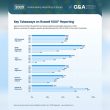Carbon Direct, a global leader in science-based carbon management, and JPMorgan Chase have jointly released a new report titled “Optimizing for Biodiversity with Nature-Based Projects in the Voluntary Carbon Market: Principles for Pursuing Dual Outcomes.” The publication offers a practical framework to help organisations design and select nature-based carbon projects that deliver measurable outcomes for both carbon removal and biodiversity protection.
While the voluntary carbon market (VCM) has largely focused on emissions reduction, integrating biodiversity outcomes has proved challenging. The report argues that nature-based projects — particularly those rooted in land management — present a unique opportunity to embed biodiversity-positive practices that contribute to global sustainability goals, provided that developers and investors address inherent trade-offs and complexities.
The report introduces a six-principle framework for identifying and designing dual-outcome projects, drawing on scientific best practices, an analysis of 1,639 global VCM projects, and established registry protocols. It provides practical recommendations on aligning investments with organisational priorities, setting robust reporting standards, and assessing project claims with credibility and consistency.
“Investing in nature-based solutions demands both scientific rigour and local relevance,” said Dr. Sarah Federman, Vice President of Landscape Decarbonization at Carbon Direct. “Working with JPMorgan Chase allowed us to deliver a framework that helps market actors credibly advance biodiversity and climate outcomes. We hope these principles set a new benchmark for transparency and impact in the voluntary carbon market.”
Key recommendations from the report include:
- Contextualising biodiversity outcomes – recognising that biodiversity benefits are inherently local and non-fungible across regions.
- Defining outcome-based objectives – ensuring biodiversity metrics are measurable and aligned with project goals.
- Adopting adaptive management – allowing flexibility in project design while maintaining accountability and ambition.
- Taking a long-term perspective – acknowledging that biodiversity and carbon outcomes may operate on different timelines and must be monitored accordingly.
“As demand grows for voluntary carbon market projects that deliver nature-positive results, we were thrilled to collaborate with Carbon Direct to establish clear principles for achieving both outcomes,” said Gwen Yu, Head of Emerging Sustainability Issues at JPMorgan Chase. “This work contributes to shaping best practices that can scale finance for both climate and nature.”
The study’s methodology combines extensive analysis of monitoring and verification standards, policy frameworks, and scientific literature on conservation and restoration. Projects were evaluated using quantitative and qualitative filters — such as ecological connectivity, species appropriateness, and habitat fragmentation — to ensure rigour and actionable insights for both buyers and developers.





















